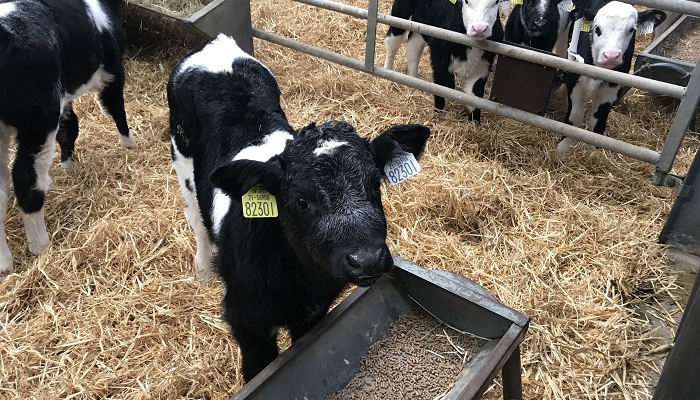19 January 2024
Limit sources when buying dairy-beef calves

An essential factor in developing profitable dairy-beef systems is the protection and maintenance of health. For many dairy-beef producers, this starts on the day the calf is purchased.
To prepare farmers for the upcoming rearing period, the Teagasc DairyBeef 500 Campaign hosted a webinar on Tuesday, January 16th. Sarah Higgins, Ruminant and Equine Veterinary Manager with MSD Animal Health, joined this webinar to provide an overview of the health factors to consider when purchasing calves.
“When it comes to calf health, our overall goal or objective is to optimise the calf’s immunity in conjunction with reducing infectious pressure,” Sarah said.
“It is really important that you have a strategic plan in place for control measures and this would incorporate vaccination, good biosecurity measures, hygiene, good farm management and also housing,” she added.
One way by which farmers can reduce this infectious pressure, Sarah said, is through reducing the number of source farms from which calves are purchased.
“If you have less farms that the calves are coming from, you will reduce infectious pressure. You will reduce the risk of infectious disease and ultimately reduce the incidence of disease in your batch of calves – in particular respiratory disease and also calf scour.”
Additionally, for farmers buying calves directly off dairy farms this spring, seeking information on the colostrum management practices, the disease status and vaccination programmes being implemented on the herd of origin are a must.
Purchasing a healthy calf from a trusted source can reduce the risk of introducing disease, but cases of sickness can still occur within the first 24-48 hours post arrival. During this period, Sarah advised, monitoring the calf’s health is of high importance. Things to monitor for during this period include: off-form calves; calves with a reduced appetite; isolated or weak calves; calves with ocular or nasal discharge; coughs or calves with a high respiration rate; fever; and scours.
On this, Sarah said: “If you see any of these signs you really need to act promptly and investigate what is going on with these calves. Have a look at them and if you are not happy with what is going on or if you are not sure what sort of disease is at play here, I would highly recommend contacting your own private veterinary practitioner so that they can diagnose the disease early and treat accordingly which is really important.”
Sarah’s presentation as part of the DairyBeef 500 webinar also focused on bovine respiratory disease and vaccination protocols. Watch the webinar recording below for more information:
The DairyBeef 500 team will host another webinar on Tuesday, January 30th. For more information on this webinar, click here.
